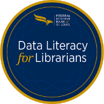Lack of Child Care Is A Barrier to Employment

Excerpt from On The Economy Blog of the Federal Reserve Bank of St. Louis
Lack of Child Care Is a Barrier to Employment for ALICE Households
August 22, 2023
By William M. Rodgers III
The ALICE threshold represents the income needed to cover essential living costs such as housing, food, transportation, healthcare, childcare, and other necessities. ALICE stands for “asset limited, income constrained, employed” (ALICE).
The most recent estimate indicates that in 2021, 43% of Missouri households were below the ALICE threshold and exceeded the national average of 41%. The percentage of households below the ALICE threshold in 2021 was similar to where it was pre-pandemic.
Having over one-third of U.S. households unable to meet their basic cost of living has a direct impact on productivity, as these families typically face inadequate housing, nutrition, transportation, and access to affordable child care. In particular, child care has become increasingly more important as women make up a larger share of the labor force: By 2013, mothers were the primary or sole earners for 40% of households with children under 18, compared with 11% of households in 1960, according to a report by the Pew Research Center.
Prior to the pandemic, almost 60% of children under age 5 (11.8 million) were enrolled in regular, weekly nonparental care arrangements (PDF). And early in the COVID-19 pandemic, a lack of child care led nearly 20% of working parents to leave their jobs or reduce their hours; at the time, only 30% of working parents had any form of backup child care in place.
The Federal Reserve Bank of St. Louis held roundtable conversations across the Eighth Federal Reserve District with workforce and economic development experts to gain insight into community economic security and mental health. The roundtable discussions confirmed that access to child care is a prominent barrier to working parents, especially mothers. However, as one roundtable participant described, other challenges can compound the problem.
Tight labor conditions have created opportunities for workers to switch to better jobs, make wage gains, or re-enter the job market after a lengthy absence. But many workers already were in a precarious situation; as the previously cited ALICE numbers reveal, 4 in 10 households couldn’t afford the basics in 2021. Investing resources to develop or expand programs and services that support ALICE households in the labor market—such as child care and mental health services—could raise their productivity and, thus, their living standards.
Source: ALICE Households Face Continued Challenges despite Tight Job Market. (n.d.). Federal Reserve Bank of St. Louis. Retrieved August 23, 2023, from https://www.stlouisfed.org/on-the-economy/2023/aug/alice-households-face-continued-challenges-tight-labor-market
Child Care Aware® of Missouri – Data & Analysis Services
Our comprehensive data analytic services include child care, demographic, economic, and social data to help your business grow. We offer customized data reports, analysis, and geographic mapping to interpret and visualize data. Contact us today.
Director, Data & Analysis 314-881-4657
Child Care Aware® of Missouri
michael@mochildcareaware.org
 |
Data Literacy Certification Issued by |
Monetary Policy Certification Issued by |
Explore our other Child Care Aware® of Missouri resources:
FREE Clock Hour Training
Scholarships for Educators
Child Care Health and Wellness
Family Child Care Network
Leadership Development Opportunities
Missouri Office of Childhood Updates
Show Me Child Care Resources
Support Child Care Aware® of Missouri
Community Data
Join Our Team
Resources to Build Your Business
.png?width=666&height=414&name=Child%20Care%20Aware%20Logo%20(1).png)

